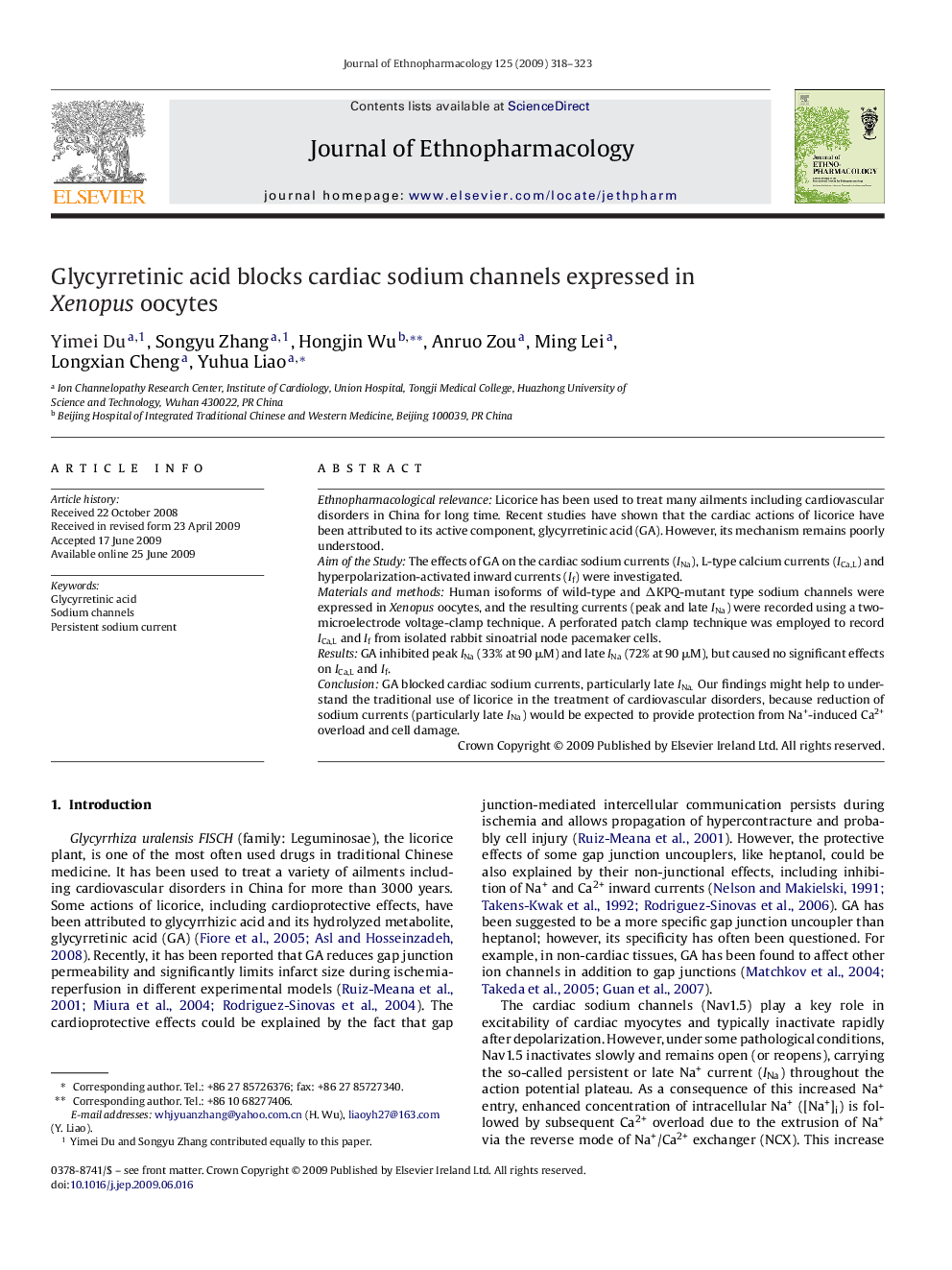| Article ID | Journal | Published Year | Pages | File Type |
|---|---|---|---|---|
| 2546257 | Journal of Ethnopharmacology | 2009 | 6 Pages |
Ethnopharmacological relevanceLicorice has been used to treat many ailments including cardiovascular disorders in China for long time. Recent studies have shown that the cardiac actions of licorice have been attributed to its active component, glycyrretinic acid (GA). However, its mechanism remains poorly understood.Aim of the StudyThe effects of GA on the cardiac sodium currents (INa), L-type calcium currents (ICa,L) and hyperpolarization-activated inward currents (If) were investigated.Materials and methodsHuman isoforms of wild-type and ΔKPQ-mutant type sodium channels were expressed in Xenopus oocytes, and the resulting currents (peak and late INa) were recorded using a two-microelectrode voltage-clamp technique. A perforated patch clamp technique was employed to record ICa,L and If from isolated rabbit sinoatrial node pacemaker cells.ResultsGA inhibited peak INa (33% at 90 μM) and late INa (72% at 90 μM), but caused no significant effects on ICa,L and If.ConclusionGA blocked cardiac sodium currents, particularly late INa. Our findings might help to understand the traditional use of licorice in the treatment of cardiovascular disorders, because reduction of sodium currents (particularly late INa) would be expected to provide protection from Na+-induced Ca2+ overload and cell damage.
